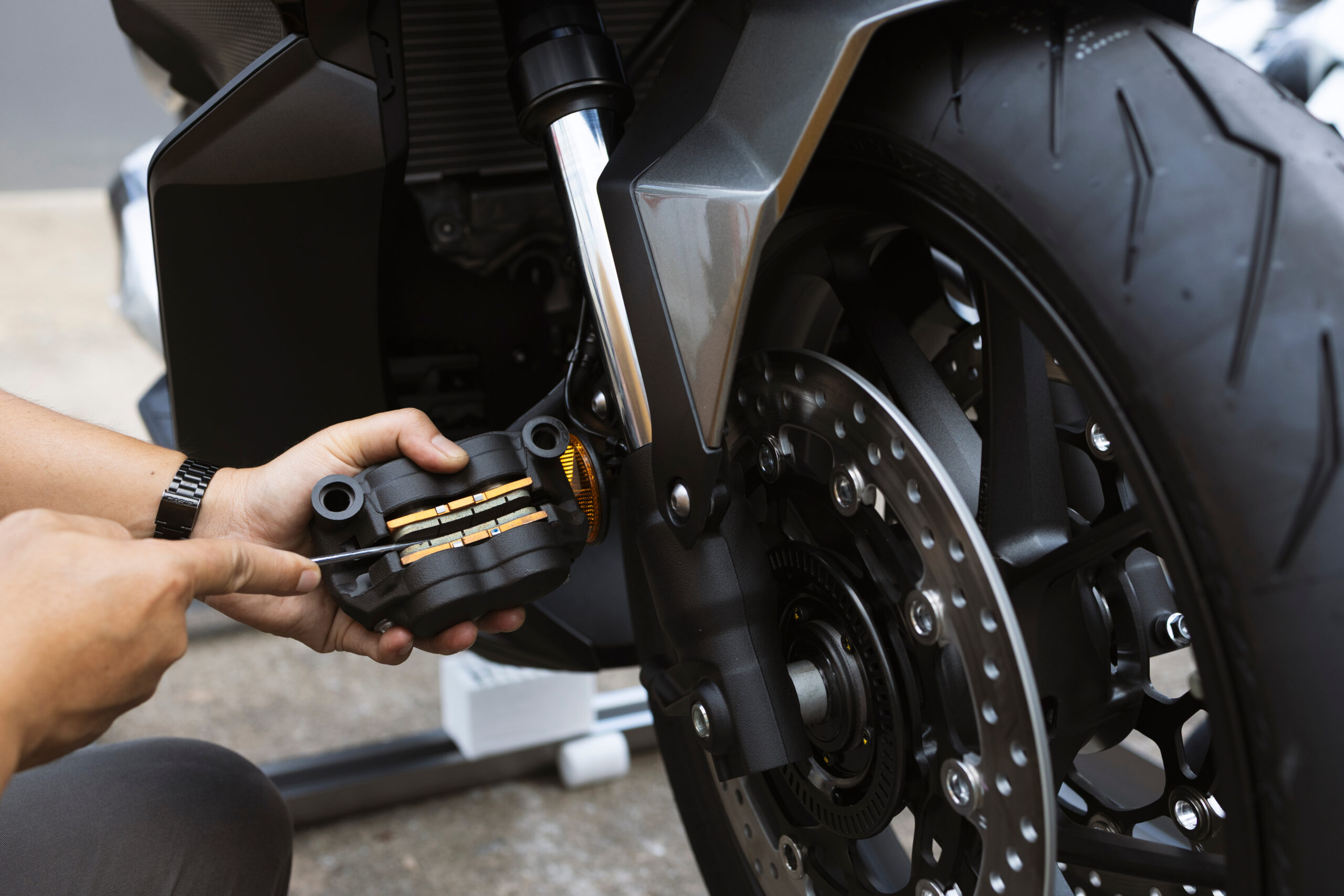This week sees a bit of a shock for all bike riders as we take on colder, wetter and darker rides to school, college and work. It’s a bit grim out there, but we’ve got to keep riding!
But as the weather turns a bit bleak it’s more important than ever that we stay on top of our bike maintenance: nothing will hurry us along to a crash faster than dodgy brakes or faulty tyres. We’ll look at tyres next time, but this time, it’s the brakes.
Let’s look at the brakes…
Have you noticed your brakes feel a little stiff, or they are squeaking? Maybe there’s an unfamiliar feel when you pull on the levers, or a bit of travel when you brake. Could be your brakes need a little care and attention.
It’s a fairly simple process to check to see if your brakes are in order. If you’re not confident in maintaining them yourself, your local garage can handle it, and any cash spent at your local garage will be money well spent. For precise advice, refer to the bike servicing/maintenance manual.
Our checks here can be done by the rider, though.
Check brake pads
Start with a quick check on the pads themselves. Brake pads are fitted with a wear indicator groove on the surface of the pad. As the pads begin to wear down, the groove will begin to disappear – so if you see a visible groove, you’re in luck, you’ve plenty of miles left.
But if the groove is faint then it is a sign it needs replacing. Your local garage will soon sort that out.
Keep the callipers and pistons clean
Keeping your brake callipers and pistons clean is one of the most important things you can do for your bike - ideally, the pistons should be cleaned regularly to prevent them seizing inside the calliper. They often get coated in mud, road rubbish and water that makes them stick on when applied.
You can clean them yourself, though if you are putting the bike in for a garage overhaul the mechanics will do it as part of the service. To do it yourself, refer to your bike maintenance manual, though by unbolting the calliper you should be able to slide the brake pads out so you can check the pad and give callipers and pistons a good clean.
To clean the discs without removing them, prop the wheel up on a stand one at a time and work on the exposed disc with a stiff nylon brush or scouring pad. That will get rid of the road grit and detritus, plus residue from the calliper.
Finish off the job with a wipe of brake cleaner.
Fluid check
Check your brake fluid. The fluid level should be between the upper and lower level marks on the reservoir. Your service manual will show you where to look.
Look after your brakes
Brake pads should last around 20,000 miles but that is very dependent on use and riding style.
Remember that more speed = increased wear. Those who mostly ride at slower speeds for a smaller amount of time are going to have a lot less wear on their brakes in comparison to those who are braking at higher speeds.
You may also find that your front brake wears a lot faster than your rear brake due to the weight transfer when braking - causing faster wear.
Also if debris or rust collects in the pistons it can cause the brake pads to make uneven contact with the rotors, leading to uneven brake pad wear. It’s important to keep them clean.
Remember, good riding = longer brake life. The best way to maintain your brake pads for longer is to adopt better riding habits, such as:
- Follow speed limits and maintain safe following distances.
- Keep an eye on traffic and anticipate necessary stops/braking.
- Regularly service the bike and change brake fluid regularly
- Remove any unnecessary weight from the bike.
- Keep your speeds low in heavy traffic
- Always replace your callipers in pairs - failure to do so can result in imbalance.
Finally, if you do any work on your brakes, even just a good clean, take it nice and easy for the first few miles, so they can bed back in properly.

